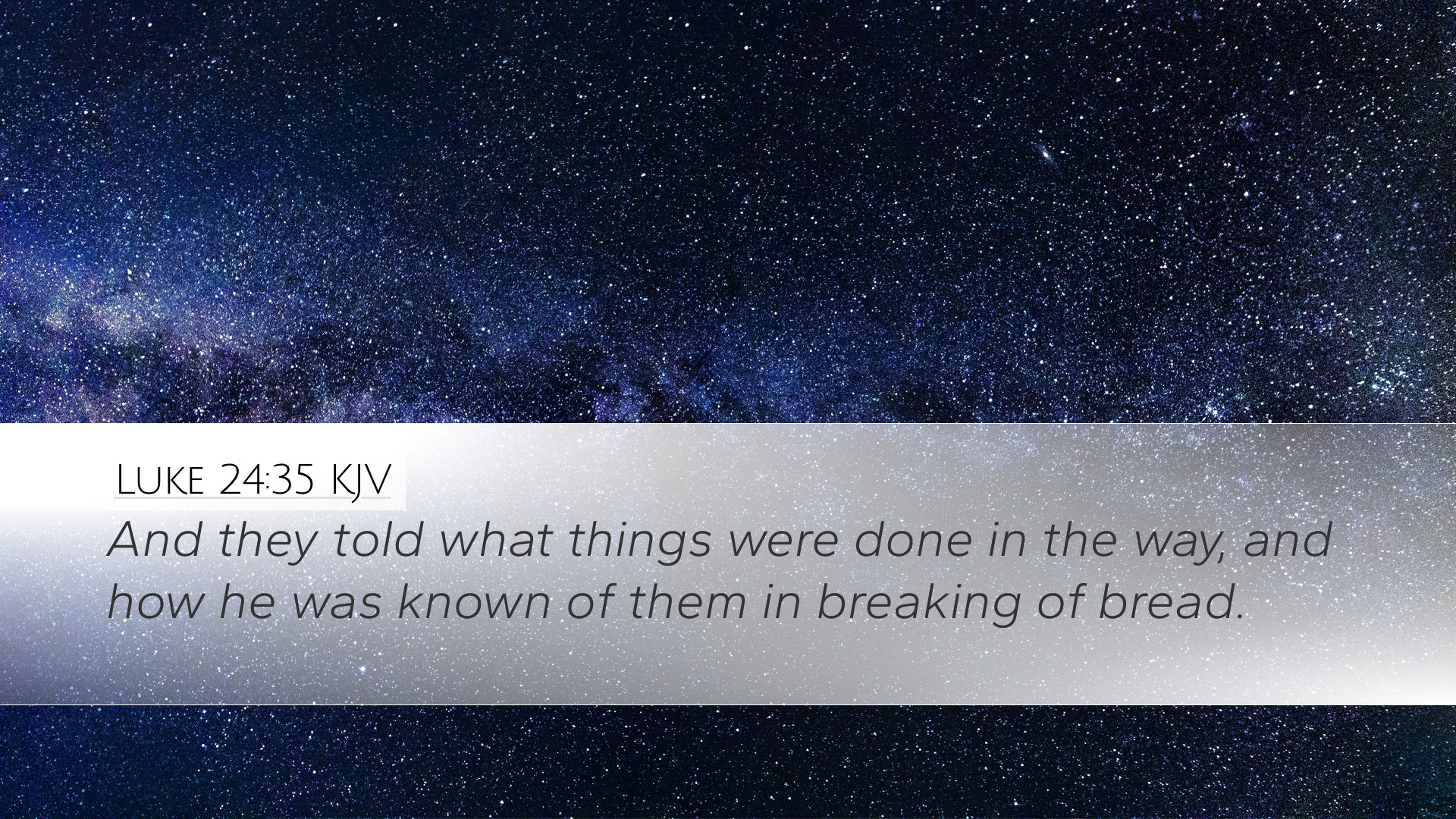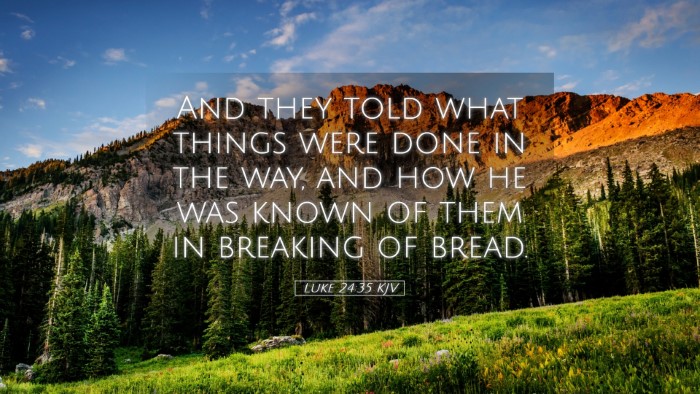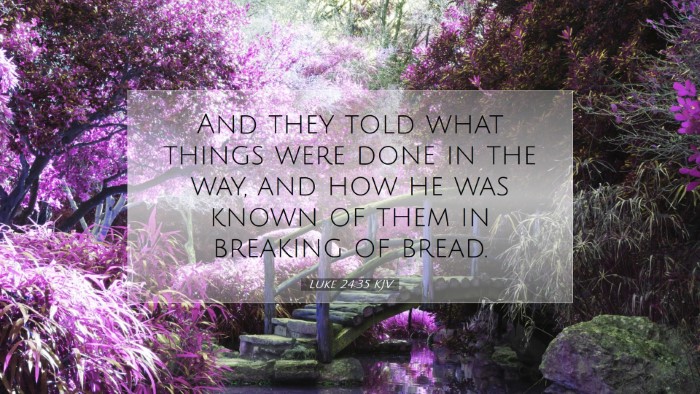Commentary on Luke 24:35
In Luke 24:35, we find a significant moment in the post-resurrection narrative, where the two disciples recount their encounter with the risen Christ. This passage not only serves as an affirmation of the resurrection but also highlights the transformative impact of that encounter on the believers. Below is a summarized commentary based on insights from renowned public domain sources.
Text of Luke 24:35
"And they told what things were done in the way, and how he was known of them in breaking of bread."
Contextual Analysis
The context of this verse follows the Emmaus Road encounter, where two disciples, post-resurrection, walk and talk with Jesus but initially do not recognize Him. It emphasizes the theme of revelation and recognition of Jesus through the act of breaking bread, a significant moment of fellowship and communion.
Insights from Matthew Henry
Matthew Henry notes that this passage provides a clear demonstration of the importance of fellowship among believers. He emphasizes:
- The Act of Bearing Witness: The disciples felt compelled to share their encounter with others, illustrating the natural response of joy and excitement after meeting Christ.
- Breaking of Bread: Henry highlights that the act of breaking bread is deeply symbolic, representing not only physical nourishment but also spiritual communion with Christ.
- Recognition of Christ: The moment when Christ was "known" to them reveals that understanding and acknowledgement of Jesus often come through shared experiences in community.
Insights from Albert Barnes
Albert Barnes provides a detailed exposition of several dimensions found in this verse:
- Historical Context: He underscores the significance of sharing testimonies among disciples, which serves to strengthen faith and build the early church community.
- Spiritual Insight: Barnes points out that the act of breaking bread can be interpreted as a foreshadowing of the Lord's Supper, where believers truly recognize Christ’s presence among them.
- Faith Development: The transformation of these disciples from despair to joy illustrates the power of encountering the risen Lord, and it challenges believers to testify of their own encounters.
Insights from Adam Clarke
Adam Clarke's commentary adds further nuances to understanding this text:
- Intentional Sharing: Clarke emphasizes that their decision to share with the others demonstrates a sense of urgency in spreading the message of resurrection. This serves as a model for current evangelistic efforts.
- Breaking of Bread as Revelation: He elaborates that this act is not merely a meal; it signifies a deeper revelation of Christ to His followers, drawing parallels with the Last Supper.
- Importance of Community: Clarke asserts that the disciples' deliberation embodies the community aspect of faith—experiencing Jesus collectively enhances the believer’s understanding and relationship with Him.
Theological Implications
The exploration of Luke 24:35 reveals several theological implications:
- Resurrection Reality: The reality of the resurrection is central to Christian faith, and this passage illustrates the natural response to recognize and proclaim this event.
- Communal Aspect of Faith: The disciples’ sharing underscores that faith is meant to be lived out in community, fostering growth and mutual encouragement among believers.
- Jesus in Daily Life: The interpretation of Jesus being made known in the breaking of bread suggests that Christ is encountered in the ordinary aspects of life, which cultivates an everyday relationship with Him.
Practical Applications for Ministry
This passage has meaningful implications for pastors, students, and theologians:
- Encouraging Testimonies: Churches should cultivate an environment where sharing personal testimonies of Christ’s work is valued, fostering communal faith development.
- Communion as Connection: Emphasizing the significance of communion in worship can deepen congregational appreciation of Christ’s presence and recognition in their midst.
- Integrative Teaching: Educators should integrate the themes of recognition and fellowship in their teaching to promote a holistic understanding of scripture and its application in life.
Conclusion
Luke 24:35 encapsulates a transformative moment of realization, community, and mission in the aftermath of the resurrection. Insights from Matthew Henry, Albert Barnes, and Adam Clarke encourage believers to understand the significance of communal testimony and the daily recognition of Christ in their lives. This passage invites all followers of Christ to not only acknowledge their encounters with Him but also share these experiences in a communal setting, fostering a community of faith that thrives on the joy and understanding of Christ's resurrection.


